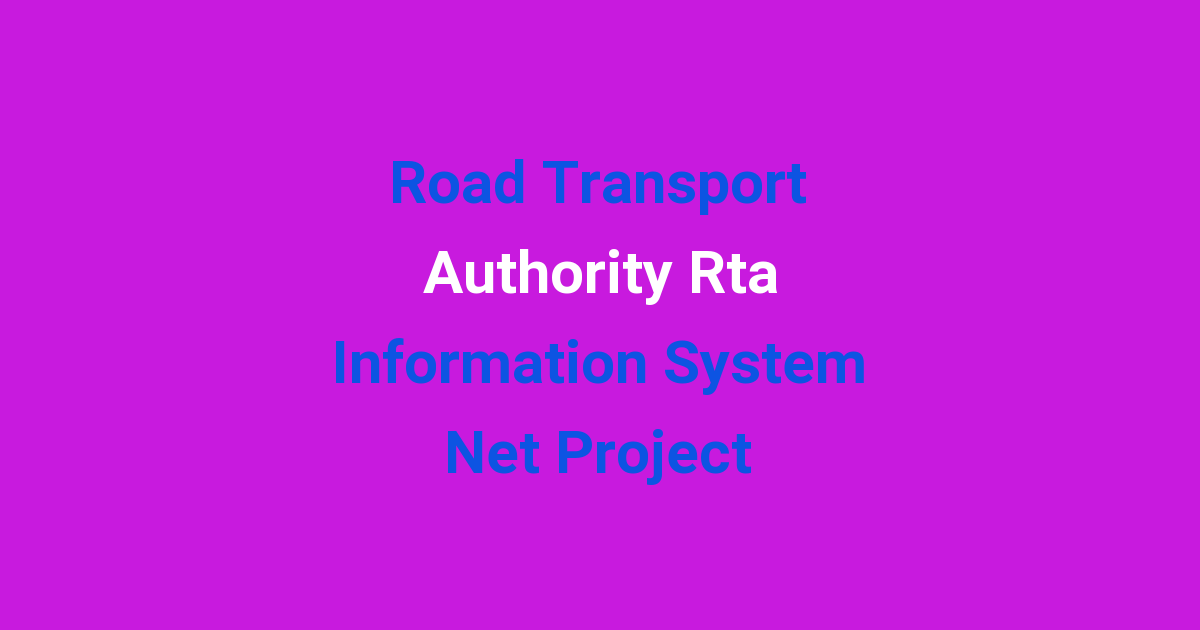Project for the Road Transport Authority’s (RTA) Information System net.
Introduction
As a student of Bachelor of Technology in India, I have been tasked with analyzing and proposing a new system for the Road Transport Authority (RTA) information system. The RTA plays a crucial role in managing and regulating road transport in our country, and an effective information system is essential for its smooth functioning. In this project, I will discuss the existing system, its drawbacks, and propose a new and improved system that addresses these shortcomings.
Problem Statement
The existing RTA information system is outdated and inefficient, leading to delays, errors, and inefficiencies in the processing of various tasks such as vehicle registration, license issuance, and fee collection. The lack of integration and automation in the system results in a cumbersome and time-consuming process for both the RTA officials and the general public. This hampers the overall productivity and effectiveness of the RTA.
Existing System
The current RTA information system is primarily paper-based, with limited computerization and connectivity. Each RTA office maintains its own records manually, leading to duplication of data and increased chances of errors. The lack of a centralized database means that information cannot be easily accessed or shared between different offices, resulting in delays and inefficiencies in decision-making and service delivery.
Disadvantages
Some of the key disadvantages of the existing RTA information system include:
- Manual data entry leading to errors and inconsistencies
- Lack of integration between different RTA offices
- Difficulty in tracking and monitoring vehicle registration and license issuance
- Long processing times for various RTA services
- Poor data security and privacy protection
Proposed System
The proposed RTA information system will be a comprehensive, integrated, and user-friendly platform that automates and streamlines the various processes of the RTA. It will include modules for vehicle registration, license issuance, fee collection, and data management, all of which will be interconnected and accessible from a centralized database. The system will also have advanced security features to protect sensitive information and ensure data privacy.
Advantages
The advantages of the proposed RTA information system include:
- Automation of routine tasks leading to increased efficiency and productivity
- Integration and connectivity between different RTA offices for seamless data sharing
- Real-time tracking and monitoring of vehicle registration and license issuance
- Reduced processing times for various RTA services
- Enhanced data security and privacy protection
Features
The key features of the proposed RTA information system will include:
- Centralized database for easy access and sharing of information
- User-friendly interface for both RTA officials and the general public
- Automated workflows for faster processing of tasks
- Data encryption and secure authentication mechanisms
- Real-time notifications and alerts for important updates
Conclusion
In conclusion, the proposed RTA information system aims to address the shortcomings of the existing system and provide a more efficient, integrated, and secure platform for managing road transport in our country. By automating and streamlining various processes, the new system will improve the overall productivity and effectiveness of the RTA, leading to better service delivery and customer satisfaction. I believe that this project will make a significant contribution to the field of transportation engineering and pave the way for a more modern and reliable RTA information system.

